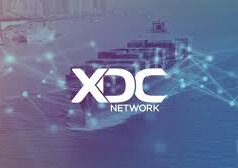Hedera is no ordinary blockchain—it’s a third-generation distributed ledger that leverages a unique consensus algorithm called Hashgraph to deliver unparalleled speed, security, and scalability. Since its launch in 2018 by Leemon Baird and Mance Harmon, Hedera has positioned itself as a go-to platform for developers and enterprises building decentralized applications (dApps) that demand high throughput and low latency. With its native HBAR token, carbon-negative footprint, and a governance model backed by global giants like Google and IBM, Hedera is redefining what public blockchains can do. Let’s unpack its technical underpinnings, real-world applications, and why it’s a compelling choice for developers and investors in 2025.
Hashgraph Consensus: The Engine Under the Hood
At the heart of Hedera lies Hashgraph, a directed acyclic graph (DAG) consensus mechanism that sets it apart from traditional blockchains. Unlike Bitcoin’s proof-of-work (PoW) or Ethereum’s proof-of-stake (PoS), Hashgraph uses a gossip-about-gossip protocol paired with virtual voting. Nodes share transaction data in a peer-to-peer fashion, propagating events (transactions and their metadata) across the network. This creates a tamper-proof ledger where transactions achieve finality in 3-5 seconds, with a throughput of 10,000 transactions per second (TPS)—orders of magnitude faster than Bitcoin’s 7 TPS or Ethereum’s 15-30 TPS pre-layer-2 scaling.
Hashgraph’s asynchronous Byzantine Fault Tolerance (aBFT) ensures security even if up to one-third of nodes are malicious or fail, a gold standard in distributed systems. Each event in the DAG contains two parent hashes, linking it to prior transactions, and nodes calculate consensus order using a deterministic algorithm. This eliminates the need for energy-intensive mining, making Hedera carbon-negative and certified by the Carbon Trust. Transaction fees are fixed and low—$0.0001 for basic transfers, $0.01 for smart contract calls—stored in a fee schedule on-chain, ensuring predictability for developers.
Network Architecture: Sharding and Scalability
Hedera’s architecture is built for scale. It uses a sharded design, with the mainnet currently operating as a single shard but capable of horizontal scaling to multiple shards. Each shard processes transactions in parallel, theoretically supporting 100,000 TPS in future upgrades, as outlined in Hedera’s 2025 roadmap. The network’s nodes, maintained by the Hedera Governing Council (up to 39 permissioned entities like IBM, Google, and Standard Bank), ensure decentralized operation while prioritizing enterprise trust. Public mirror nodes allow anyone to access ledger data, balancing transparency with performance.
Hedera supports four core services:
- Token Service (HTS): Enables creation of fungible and non-fungible tokens (NFTs) with customizable properties, like minting limits or royalty fees, without complex smart contracts.
- Consensus Service (HCS): Provides a tamper-proof timestamp and ordering for events, ideal for applications like audit logs or voting systems.
- Smart Contract Service: Supports EVM-compatible smart contracts written in Solidity or Vyper, with gas fees paid in HBAR.
- File Service: Offers decentralized storage for up to 1MB per file, costing ~$1 per gigabyte, suitable for metadata or small datasets.
These services are accessible via Hedera’s SDKs in JavaScript, Java, and Go, with gRPC and JSON-RPC APIs for integration.
Developer Tools: Building on HederaFor developers, Hedera is a playground of possibilities. The Hedera SDK simplifies dApp development with libraries for account creation, token minting, and consensus messaging. For example, creating a fungible token takes just a few lines of code:
javascript
const tokenCreateTx = new TokenCreateTransaction()
.setTokenName("MyToken")
.setTokenSymbol("MTK")
.setDecimals(2)
.setInitialSupply(1000000)
.setTreasuryAccountId(operatorId);
const txResponse = await tokenCreateTx.execute(client);The platform’s EVM compatibility lets Ethereum developers port dApps with minimal changes, while native services like HTS outperform ERC-20/721 standards in speed and cost. The HBAR Foundation offers grants up to $250,000 through its $100 million fund, supporting over 2,000 dApps as of July 2025. Developers can test ideas on Hedera’s testnet, which mirrors the mainnet but uses free HBAR tokens. Resources like developer.hedera.com and the #dev channel on Hedera’s Discord provide tutorials and community support.
Real-World Applications: From DeFi to Supply Chain
Hedera’s low latency and fixed fees make it a magnet for enterprise and DeFi use cases. In finance, SaucerSwap, a Hedera-based DEX, boasts $100 million in TVL, leveraging HTS for token swaps and liquidity pools. Standard Bank uses Hedera for cross-border settlements, cutting costs by bypassing legacy systems. In supply chain, ServiceNow integrates Hedera’s HCS to track assets transparently, while Atma.io uses it for IoT data logging, connecting 10 million devices in 2025.
NFTs thrive on Hedera, too. Platforms like Hgraph.io enable artists to mint NFTs for pennies, avoiding Ethereum’s gas fee woes. Gaming projects like HashPort use HTS for in-game assets, with low-latency consensus enabling real-time play-to-earn mechanics. These use cases highlight Hedera’s versatility, from microtransactions to enterprise-grade solutions.
HBAR Dynamics: Tokenomics and Market Outlook
HBAR, Hedera’s native token, powers all network operations. With a circulating supply of 36.7 billion and a $2.5 billion market cap in July 2025, HBAR trades at ~$0.068, down from its $0.57 peak in 2021. Staking yields 2-3% annually, with 7 billion HBAR staked across 26,000 accounts. The token’s fixed fees protect against volatility, but its price tracks market sentiment—recent Fed warnings triggered a 5% dip. Long-term, HBAR’s value ties to adoption, with partnerships like Chainlink’s CCIP integration boosting interoperability.
Challenges persist. Hedera’s permissioned council raises centralization concerns, though public mirror nodes and planned community nodes aim to address this. Competition from Solana (50,000 TPS) and Ethereum’s layer-2s (e.g., Arbitrum) is fierce, but Hedera’s enterprise focus and aBFT security give it an edge.
Strategies for Engagement: Developers and Investors
Developers should leverage Hedera’s testnet to prototype dApps, using tools like Hashi (a CLI for Hedera interactions) or Mirror Node APIs for analytics. Joining the HBAR Foundation’s grant program can fund your next big idea. Investors should monitor council announcements and dApp growth—new partnerships could drive HBAR’s price toward its $0.10 resistance level. Diversify to mitigate volatility, and track on-chain metrics like TPS (currently ~1,000) on hedera.com.
Hedera’s Future: Scaling the Blockchain Frontier
Hedera’s 2025 roadmap includes multi-shard scaling, EVM enhancements, and community node expansion. With $500 million in TVL across its DeFi ecosystem and growing enterprise adoption, Hedera is poised to challenge incumbents. Regulatory risks loom—South Korea’s recent token delistings highlight global scrutiny—but Hedera’s compliance-first approach positions it well. Whether you’re coding a dApp, staking HBAR, or exploring its NFT marketplaces, Hedera’s blend of speed, security, and scalability makes it a blockchain to watch.



























